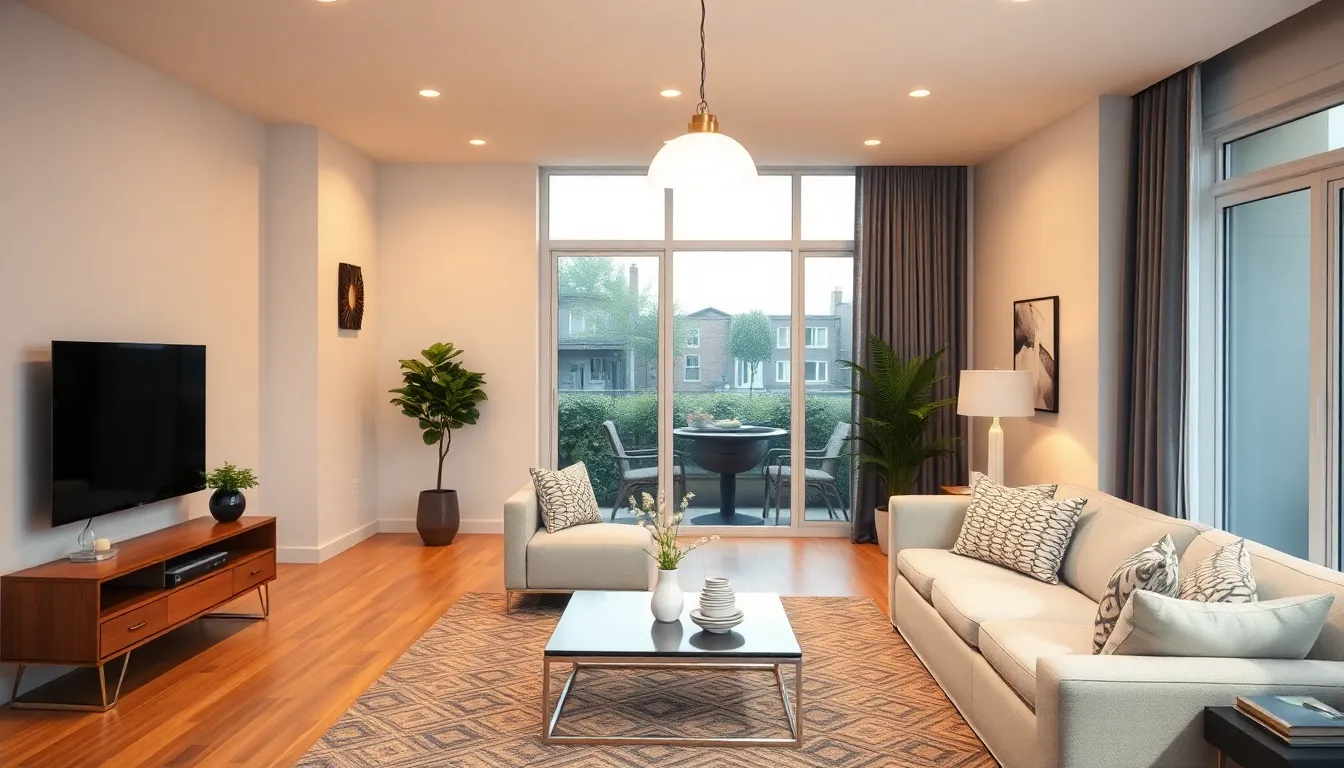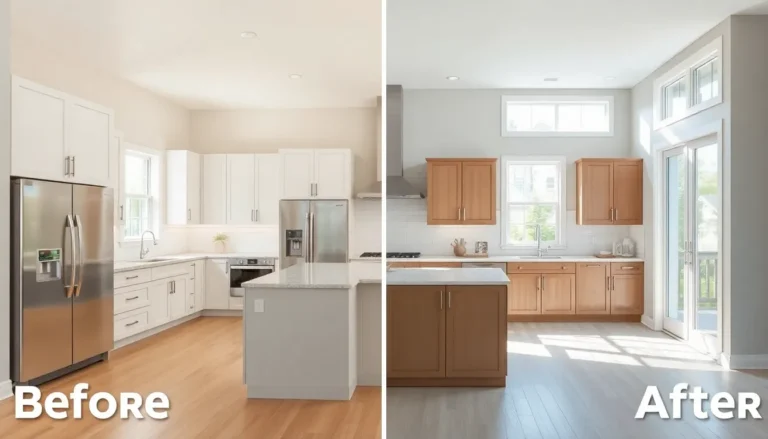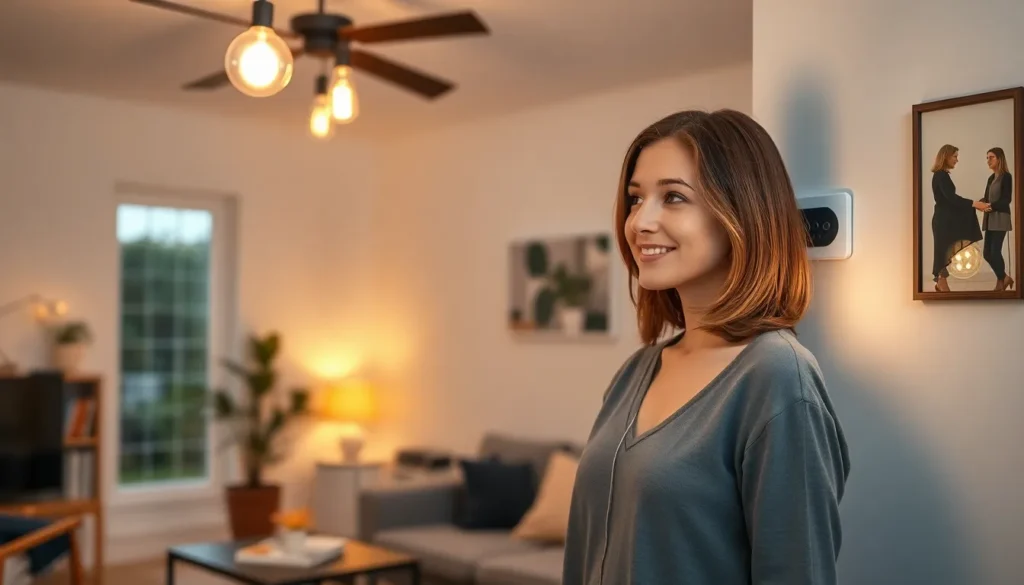Table of Contents
ToggleIn a world increasingly focused on sustainability, energy-efficient lighting has emerged as a crucial player in reducing energy consumption and lowering utility bills. With advancements in technology, options like LED and CFL bulbs are becoming popular alternatives to traditional incandescent lights. These innovative solutions not only save energy but also enhance the quality of light in homes and commercial spaces.
As more people seek ways to minimize their environmental impact, understanding the benefits of energy-efficient lighting becomes essential. From improved longevity to reduced carbon footprints, these lighting options offer a win-win for both consumers and the planet. Embracing energy-efficient lighting is more than just a trend; it’s a smart choice that aligns with a brighter, more sustainable future.
Overview of Energy-Efficient Lighting
Energy-efficient lighting reduces electricity consumption while maintaining high-quality illumination. This lighting solution includes various technologies designed to minimize energy use, lower utility bills, and decrease environmental impact. Two popular types of energy-efficient bulbs are LED (Light Emitting Diode) and CFL (Compact Fluorescent Lamp).
Advantages of Energy-Efficient Lighting:
- Energy Savings: Energy-efficient bulbs consume up to 75% less energy than traditional incandescent bulbs, translating to significant reductions in electricity bills.
- Longevity: Energy-efficient bulbs often last 10 to 25 times longer than incandescent bulbs, requiring fewer replacements over time.
- Quality of Light: Many energy-efficient options provide better light quality, offering brighter, whiter illumination that enhances color perception in spaces.
- Reduced Heat Emission: Energy-efficient lighting generates less heat compared to incandescent lights, improving safety and comfort in various settings.
Types of Energy-Efficient Lighting:
- LED Bulbs: Known for their durability and low energy consumption, LED bulbs can last up to 50,000 hours. They operate efficiently in various applications, from residential to commercial.
- CFL Bulbs: Although less efficient than LEDs, CFLs typically last 10,000 hours and utilize about 75% less energy than incandescents, making them a viable option.
Understanding the benefits and types of energy-efficient lighting contributes to informed decisions, aligning with sustainability goals while optimizing energy use.
Benefits of Energy-Efficient Lighting

Energy-efficient lighting offers significant advantages for both individuals and the environment. It enhances quality of life through improved illumination while promoting sustainability.
Environmental Impact
Energy-efficient lighting, including LED and CFL bulbs, lowers overall energy consumption. By utilizing up to 75% less energy than traditional incandescent bulbs, these technologies decrease greenhouse gas emissions dramatically. The shift to energy-efficient lighting contributes to less reliance on fossil fuels, resulting in reduced air pollution. Additionally, lower heat emissions from energy-efficient bulbs reduce the need for excessive air conditioning, subsequently conserving even more energy. Such environmental benefits signify a step toward sustainable living.
Cost Savings
Transitioning to energy-efficient lighting leads to substantial financial savings. Users can cut electricity bills by up to 75% through reduced energy use. Longer lifespans of LED bulbs, lasting 15 to 50 times longer than incandescent options, decrease replacement costs and maintenance frequency. For instance, replacing ten 60-watt incandescent bulbs with 10-watt LED bulbs saves approximately $250 over their lifetimes. Overall, energy-efficient lighting represents a wise investment, resulting in long-term savings and enhanced financial health.
Types of Energy-Efficient Lighting
Energy-efficient lighting includes various technologies that significantly reduce energy consumption while maintaining high-quality illumination. Here are three primary types of energy-efficient lighting options.
LED Lighting
LED lighting delivers outstanding efficiency and longevity. These bulbs can last up to 50,000 hours, offering substantial energy savings of around 75% compared to incandescent bulbs. LED lights emit minimal heat, enhancing safety and comfort in living spaces. They provide excellent color rendering, making spaces appear vibrant and inviting. With their durable construction, LED bulbs resist breakage and wear, making them suitable for a wide range of applications.
CFL Lighting
CFL (Compact Fluorescent Lamp) lighting presents another energy-efficient option. CFL bulbs typically last about 10,000 hours and use approximately 75% less energy than traditional incandescents. While they take a few moments to reach maximum brightness, they produce soft, warm light suitable for general lighting needs. CFL bulbs are available in various shapes and sizes, catering to different fixtures. Their compact design enables easier installation in tight spaces.
Smart Lighting Solutions
Smart lighting solutions enhance energy efficiency through automation and control. These systems allow users to adjust brightness, color, and schedules from mobile devices or voice commands. Many smart bulbs utilize LED technology, ensuring both efficiency and longevity. Integration with home automation systems provides seamless management of energy use, with timers or motion sensors further optimizing consumption. Such features enable users to tailor lighting conditions to suit their lifestyle while reducing wasted energy.
Selecting the Right Energy-Efficient Lighting
Selecting the appropriate energy-efficient lighting involves understanding specific needs, evaluating options, and considering various factors that influence performance and effectiveness.
Determine Lighting Needs
- Assess the purpose of the lighting, such as task, ambient, or accent.
- Identify specific brightness requirements measured in lumens.
- Consider the color temperature for desired ambiance, ranging from warm yellow to cool white.
Choose the Right Bulb Type
- Evaluate LEDs for long lifespans and high energy efficiency, lasting up to 50,000 hours.
- Consider CFLs for cost-effective solutions, consuming about 75% less energy than traditional bulbs, with lifespans around 10,000 hours.
- Explore smart lighting options that offer automation and customizable settings for enhanced convenience and efficiency.
Review Energy Ratings
- Analyze the energy cost label that indicates annual energy consumption and cost.
- Opt for bulbs with high Energy Star ratings, ensuring they meet strict efficiency guidelines.
Evaluate Initial and Long-Term Costs
- Compare the upfront costs of energy-efficient bulbs with potential savings over time.
- Factor in the reduced replacement frequency associated with longer-lasting options like LEDs.
Consider Dimming Features
- Evaluate the compatibility of bulbs with dimmer switches for adjustable brightness levels and improved energy savings.
- Select compatible smart bulbs that integrate seamlessly with home automation systems.
Environmental Impact
- Analyze the overall environmental benefits of selected lighting, including reduced energy consumption and lower carbon footprints.
- Investigate recycling options for disposed bulbs, especially for CFLs, which contain small amounts of mercury.
By focusing on these factors when selecting energy-efficient lighting, individuals can enhance their living spaces while promoting sustainability and reducing energy consumption effectively.
Energy-efficient lighting represents a significant step towards a more sustainable future. By choosing LED or CFL bulbs, individuals can drastically reduce energy consumption while enjoying enhanced lighting quality. This transition not only leads to substantial financial savings but also contributes to a healthier environment by lowering greenhouse gas emissions.
As technology continues to evolve, smart lighting solutions offer even greater control and efficiency. Selecting the right lighting options tailored to specific needs ensures that users maximize both comfort and sustainability. Embracing energy-efficient lighting is not just a choice; it’s a commitment to a brighter and greener tomorrow.





